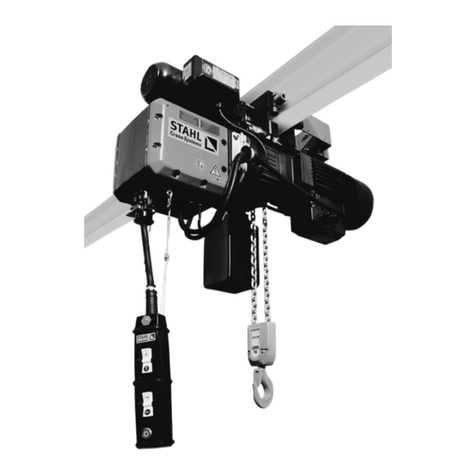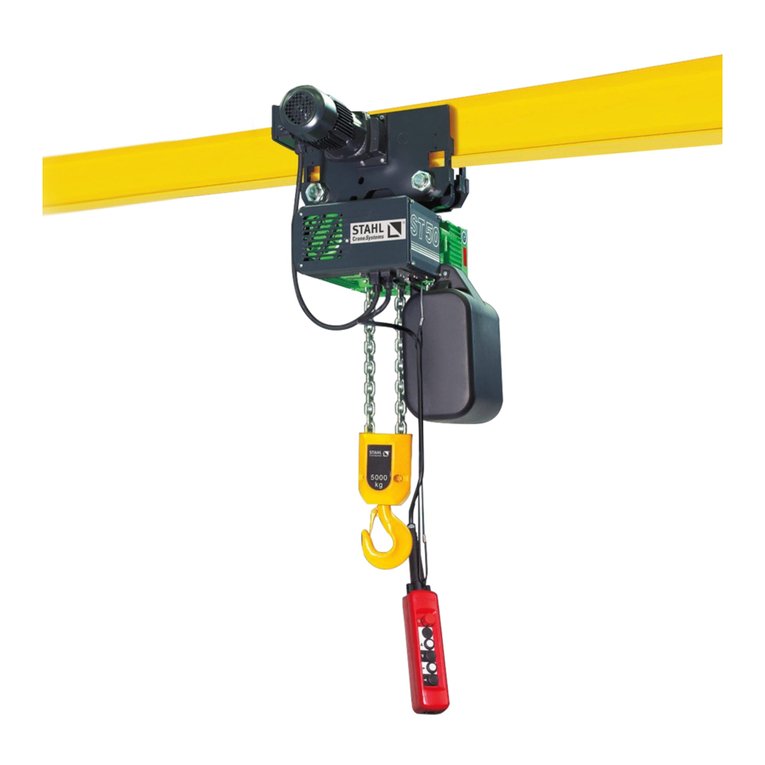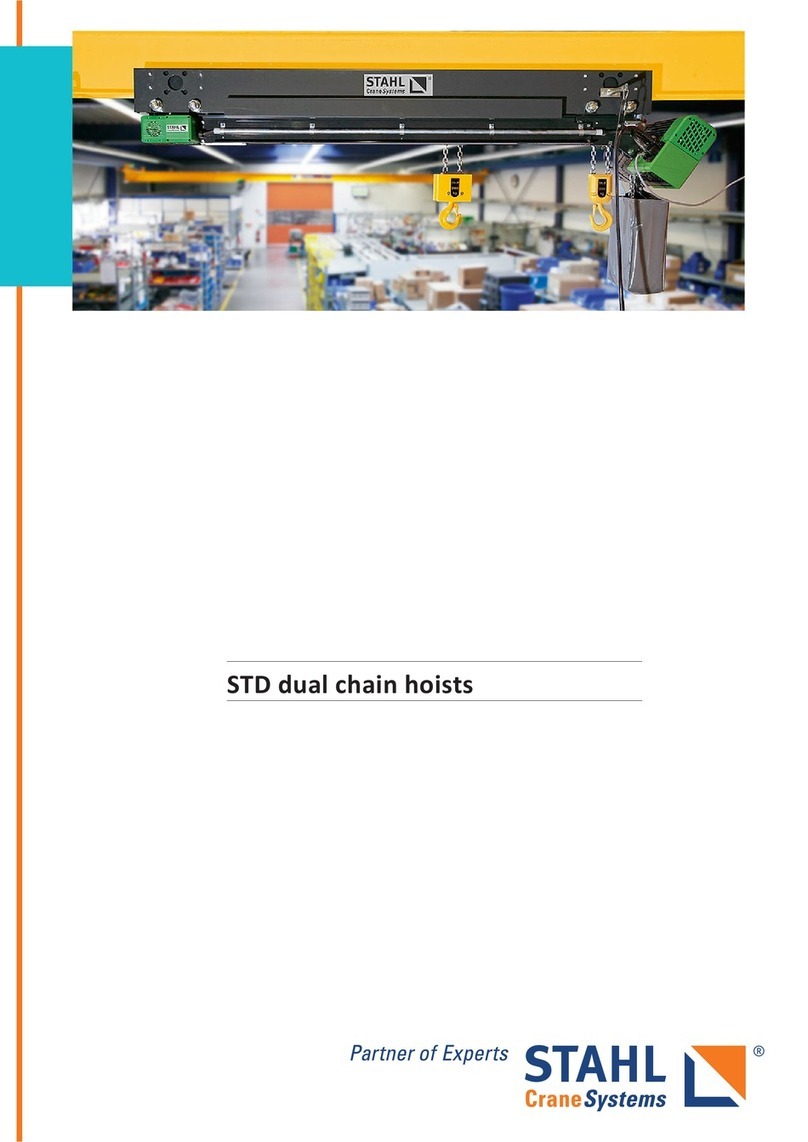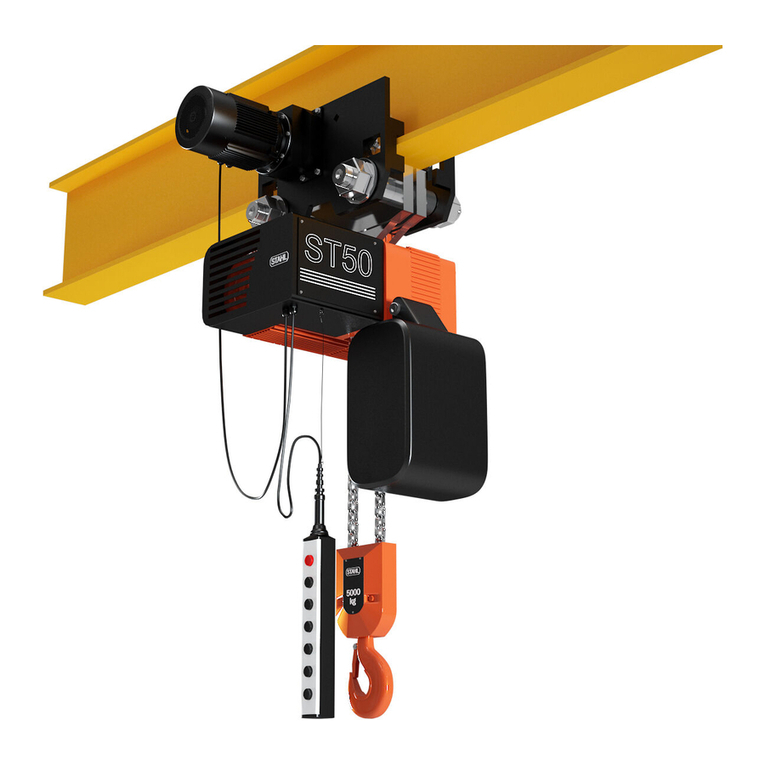
BA_ST_EN.FM
3
Table of contents
1 Safety instructions 1.1 Symbols ........................................................................................................................... 5
1.2 Operating instructions .................................................................................................. 6
1.3 Use for intended purpose............................................................................................. 6
1.4 Inappropriate use .......................................................................................................... 6
1.5 Safety-conscious operation......................................................................................... 7
1.6 Attaching load ................................................................................................................ 7
1.7 Organisational safety precautions.............................................................................. 8
1.8 General regulations....................................................................................................... 8
1.9 Electrical equipment ..................................................................................................... 8
1.10 Transport and storage................................................................................................... 8
1.11 Weight.............................................................................................................................. 8
1.12 Installation, commissioning, maintenance and repairs .......................................... 9
1.13 Warranty.......................................................................................................................... 9
1.14 Periodic tests.................................................................................................................. 9
1.15 After sales service.........................................................................................................9
1.16 Declaration of conformity/declaration of incorporation ......................................... 9
2 Getting to know the chain hoist ..................................................................................................................................................10
3 Installing 3.1 Installing stationary chain hoist ...............................................................................11
3.2 Installing trolley...........................................................................................................11
3.3 Installing trolley on chain hoist ................................................................................12
3.4 Connecting electric trolley........................................................................................14
3.5 Fitting guide rollers.....................................................................................................15
3.6 Mount support rollers ................................................................................................15
3.7 Runway endstop .........................................................................................................16
3.8 Fitting the chain box ...................................................................................................16
3.8 Fitting the control pendant ........................................................................................17
3.9 Checking screw connections ...................................................................................17
3.10 Mains connection.......................................................................................................18
3.11 Dismantling ..................................................................................................................18
4 Commissioning 4.1 Checklist for commissioning .....................................................................................19
5 Operating 5.1 Duties of crane operator ...........................................................................................20
5.2 Operating control pendant........................................................................................21
5.3 Emergency stop ..........................................................................................................21
6 Maintenance 6.1 Maintenance work .....................................................................................................22
6.2 Maintenance intervals...............................................................................................22
6.3 Hook ..............................................................................................................................23
6.4 Load chain....................................................................................................................23
6.5 Checking function of slipping clutch .......................................................................24
6.6 Adjusting slipping clutch without load....................................................................24
6.7 Adjusting slipping clutch - with test load ...............................................................24
6.8 Hoist motor brake .......................................................................................................26
6.9 Travel motor brake......................................................................................................27
6.10 Oil change ....................................................................................................................27
6.11 General overhaul ........................................................................................................28
6.12 Trolley............................................................................................................................28
6.13 Operating hours counter (optional) .........................................................................28
7 Repairs 7.1 Chain drive ...................................................................................................................29
Subject to technical alterations; errors and printing errors excepted.
07.12

































